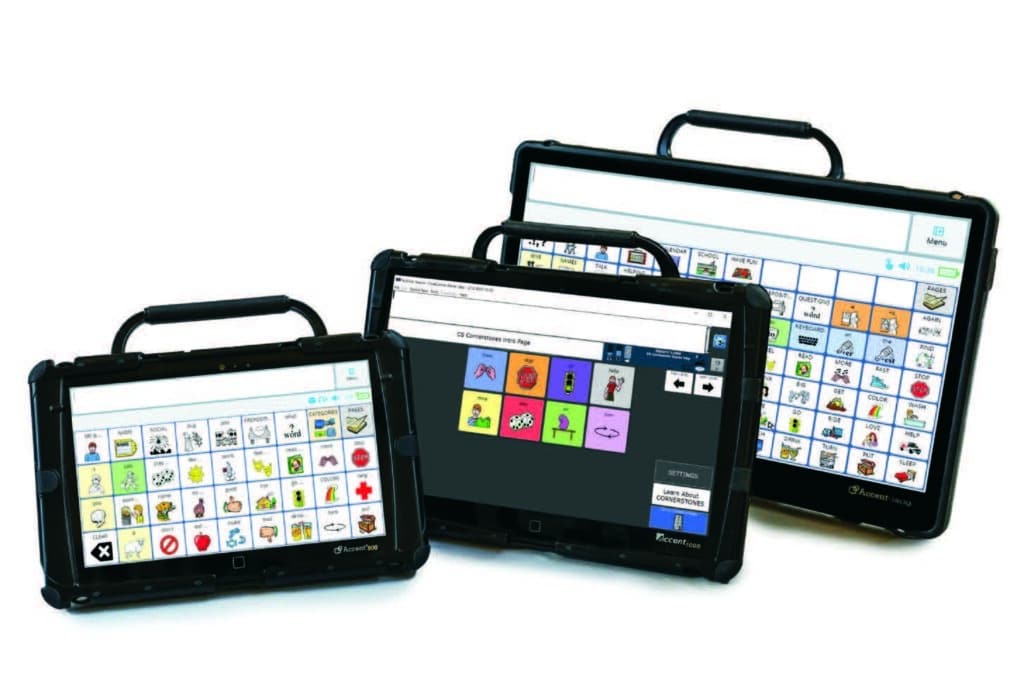For people with complex communication needs to realize the full benefit of AAC, they must first have a comprehensive AAC assessment, which requires clinicians to integrate a wide range of information to make appropriate recommendations regarding the particular AAC system to be implemented (Beukelman & Mirenda, 2005).
Speech Pathologists, in collaboration with the person, family and other team members, may use a range of assessment tools in order to identify the most appropriate AAC systems to trial. AAC assessments are dynamic and must include a comprehensive analysis of language (expression and comprehension), literacy, motor and sensory abilities as well as evaluation of current and future participation needs across a range of communication environments. Speech pathologists may use observational checklists along with more formal AAC assessment tools in order to gather and collate this information.
These can include the following:
SETT Framework – Joy Zabala
The SETT Framework is a four-part model intended to promote decision-making in assistive technology service delivery from consideration through implementation and evaluation of effectiveness. SETT stands for;
Student – all information pertaining to the person who will use AAC.
Environment – who is in the persons’ network and where does the person need to go. For example, school, home, church.
Task – what are the communication goals?
Tools – feature match which AAC system will be the best fit to achieve their goals.
There are a range of SETT documents available to assist with consideration of the clients AAC needs, data gathering, tool selection and implementation.
The AAC Profile – Dr Tracy Kovach (2009)
The AAC Profile is an AAC assessment tool that measures subjective, functional skills for developing communicative competence using AAC systems. It can be used for initial AAC assessment, to re-evaluate skills and to monitor progress. It is divided into ability-based levels based on the four areas of communicative competence developed by Janice Light (1989). These are;
Operational Competence – the technical and physical skills required to operate, access the AAC system and transmit information to others.
Linguistic Competence – the development of the receptive and expressive language skills used at home and in the community. The knowledge and use of the language ‘code’ of the AAC system and the ability to attend to a communication interaction.
Strategic Competence – using knowledge of what can be communicated and how best to communicate this, including compensatory strategies for effective communication.
Social Competence – the development of skills needed for social communication and the desire to communicate reciprocally with others.
Social Networks – Sarah Blackstone & Mary Hunt Berg (2012)
This tool investigates the social networks of individuals and their communication partners, communication modes used, topics of communication and types of communication. You can use this tool to determine communication strategies and technologies for clients to use to interact with their communication partners.
MOSAIC – Dr Andy Smidt (3rd Edition, 2020)
MOSAIC stands for “A Model of Observational Screening for the Analysis of interaction and Communication.” This tool is designed to provide a structured approach to observing the communication skills of children and adults with an intellectual disability.
The Pragmatics Profile: Children, Adults Hazel Dewart & Susie Summers (1995 & 1996)
The Pragmatics Profile: People who use AAC Martin, Small & Stevens (2017)
A free interview schedule for gathering information from parents, carers and teachers about how a person communicates in daily life, to give a qualitative picture of the current communicative behaviours.
IPPA (Individualised Prioritised Problem Assessment) Wessels et al., (2000).
This assessment measures whether a piece of equipment or assistive technology has reduced the challenges a person is facing, as intended.
Communication Matrix Dr Charity Rowland
An online tool designed to pinpoint how an individual is communicating now and can be used to develop goals for future communication. It can also be used to track progress. After answering a series of questions about the individual’s communication, this tool generates a visual map of current and emerging communication skills. Suitable to use with all age groups and abilities.
To learn more through our ACCESS and Foundations Training, please see our Online and On Demand trainings page.

Liberator Pty Ltd is proud to acknowledge Aboriginal and Torres Strait Islander Peoples as the Traditional Custodians of the Country on which we live and work. We value and respect their deep and continued spiritual and cultural connections to the land, waters and seas, and pay our respects to their Ancestors and Elders past, present and future.

Copyright © 2024 Liberator Pty Ltd. | ABN: 33 123 040 442 | NDIS Provider: 4050000635